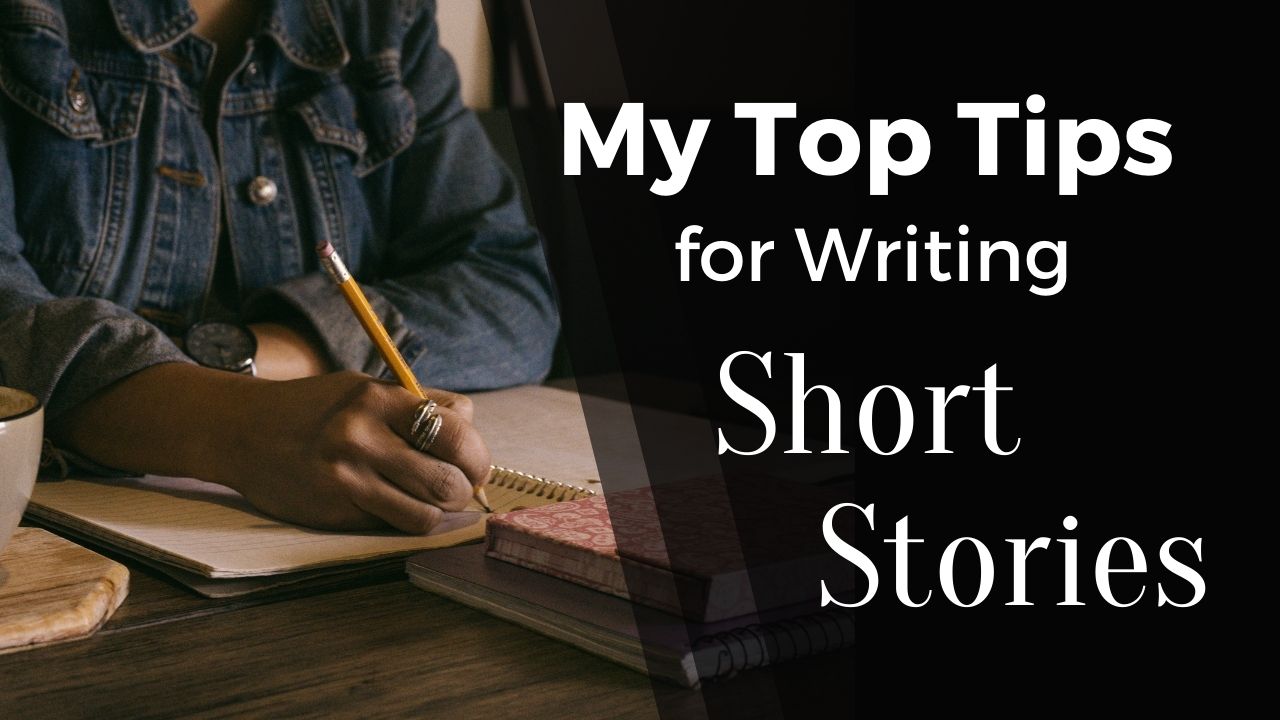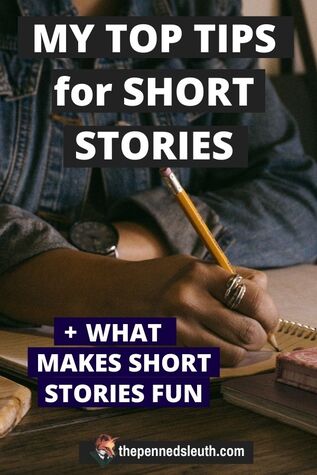Latest Writing Video! |
|
Great practice for any writer is to take a break from full novels and write some short stories. To dabble with ideas that they considered, but weren’t sure how to work them into a full novel. Yet, whether you are scaling a mountain or a hill, there are always challenges. Challenges which stunt your writing process, leaving you with the question; how do I write a good short story? Here are my top tips for writing short stories! Pin for Later!Find Your LimitMuch like planning a novel, you need to plan a short story. Yet, when it comes to planning a short story, I recommend just planning 3 aspects, no more and no less. I also recommend you go straight into writing, don’t start drawing diagrams and plotting plans. You are writing a short story, not a novel. You want to finish your short story in two hours at the most, not in several weeks or months. With that said, these are the 3 aspects you need to prepare. First, set a word count. I personally aim for 2,000 words, which gives me plenty of room to make a chapter-sized scene. For beginners, however, I recommend working up to the 2,000-word mark, starting at 500, then 1,000, then 2,000. It’s all about getting a good feel for having such a low word-count, creating a scene or sequence in such a short space can require some practice. Secondly, once you have your word-count you need to decide on the type of story you are trying to tell. There is a beginning, there is an end, but what is the theme? Are you writing a drama? A thriller? A romance? Having a good idea of what you want to write will help you remain consistent in your story, avoiding any other genre tropes that break the flow of your story. Finally, the title. You can easily think up a title for one short story, but the next won’t simply pop into your head. The title needs to capture what the story is about, or at the very least, intrigue the reader. Not much more is necessary. Don’t worry about being fancy, or clever with the title. It can be a single word title or an entire sentence, those are the limits. Picture the Beginning, Not the EndWhen you start writing, stay focused on the beginning, don’t think about an ending straight away. When writing my short stories, I have an idea for a beginning, a vague idea of a middle, but not an ending. What inspires me is the beginning, setting the scene, creating the characters, gaining the reader’s interest. After that, I rely on my instincts and imagination to develop the story as I write it. I go with what I feel is right, and often what I feel is unexpected, but still logical. My goal with my chosen genre is to scare, horrify or simply interest the reader in the darker world. That’s the only real goal I have in mind. Yet, I have written hundreds of short stories, different genres, different beginnings, different endings. I found that this technique works with every genre, as it challenges you to open your mind and develop the story as you write it. It becomes something truly special when you get into that flow and it all stems from not having a destination. It’s like taking a pen which has an unknown amount of ink and drawing a line until it runs out. It will surprise even you when you reach an end, as there is always a limit. As long as you are aiming for an ending, you will reach one. Your goal is to resolve a problem in any way your mind sees fit. That’s the core of writing a short story. Try New Ideas, New StylesI always use my short stories as more testing grounds for bigger ideas. For most writers, it is all about writing novels, not short stories. It’s understandable, as it was the novels that inspired us in the first place. The stories that stoked our imagination and our desire to create our own driving us forward. Yet, with any new experience comes a measure of confusion. We are unsure of how to put things together, or perhaps we have an idea but need to test it out before we commit. In short, a story idea might make an interesting read, a style might make an interesting read. Short stories are perfect for taking new ideas and testing them out. You let your imagination run wild, you develop the story as you go, you see how you feel about it. Perhaps you create a character that makes the story idea better, or perhaps worse. Perhaps you see an aspect of the story you didn’t see before and you run with that instead. The same goes for testing out styles. Sometimes I feel like changing the way I write, either for a new type of story or a different genre entirely. It wouldn’t do to write a comedy like a thriller writer, so perhaps a new set of phrases and words are in order? A short story gives me the opportunity to develop my writing skills and explore new avenues, it can be the same for you. You never know, you might write a short story that you turn into a novel, or develop a style that suits you better than any writing style you tried before. There is plenty of room for experimentation! Aim for Twist EndingsFinally, I would like to talk about twist-endings. There is a difference between writing an unexpected ending and a twist ending. An unexpected ending is as the name implies, an ending that is unexpected. The sequence is logical, but it is not the direction the reader would expect the story to go. A twist ending is unexpected, but it doubles down on this by taking an important part of the story that the reader has accepted and ‘twisting’ it to change the tone and story. So much like “All thumbs are fingers, but not all fingers are thumbs”, “All twist endings are unexpected, but not all unexpected endings have twists.” Generally, I aim for twist endings as it puts me into a corner, forcing me to use my imagination to get out of it. It would be too easy to follow a simple sequence and reach a conclusion, as once my mind gets into the flow of the story it simply comes naturally. Yet, by stopping 500 words before the ending and deciding to add a twist, my mind now needs to find something good and turn it bad, or something bad and turn it good. Twist endings have not always been a short story staple, but soon it became the norm for most short stories to have a twist ending, especially in the thriller genre. My final tip, in this case, is when you find yourself getting too comfortable with your short story, challenge yourself with writing a twist ending. ConclusionI started writing short stories as a challenge at first to help me maintain a consistent habit of writing. I wanted to write hundreds-of-thousands of words each year, to have an array of work to share and publish. Soon after my challenge was completed, I still found myself with the desire to write short stories in addition to novels. What started out as a good habit became a hobby, which then became an important part of my career. I cannot understate the value in writing short stories as a writer, as it will help you not only improve your writing, but maintain that passion for writing as well. I hope you enjoyed these tips and as always… Good day, goodnight and happy writing! THANK YOUAs a big thank you for reading this article I would like to offer you something for FREE! A writing course on how to improve your main character! Click here to check out your course. If you are unsure about a course, then you can sign up for free training! Claim your free training here! Thank you for reading! Kind regards Matthew Dewey, Writer
0 Comments
Leave a Reply. |







